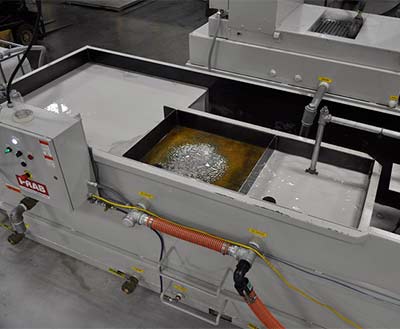
“Successful coolant recycling requires three components: particulate removal, tramp oil removal and coolant concentration control,” said a PRAB spokesperson. “The Guardian Coolant Recycling System incorporates all three elements for maximum coolant life. This combination makes it the most efficient option for centralized recycling of metalworking cutting fluids.”
“If one’s current process is labor intensive, requires a lot of downtime for sump maintenance, is wasting a lot of fluid or lacks the capacity to handle all the fluid, it is time to start thinking about centralized or machine side coolant recycling,” said the spokesperson.
“An efficient coolant recycling system offers many benefits within the shop, including improved machining, a reduction in maintenance and extended tool life-all due to the higher quality of coolant that is being consistently pumped back to the machines,” continued the spokesperson. “In addition, due to less machine downtime for sump cleaning, productivity and efficiency will increase, allowing for decreased customer lead times.”
According to PRAB, results achieved by PRAB customers include:
“Whether we are pursuing a new customer or a new contract with an existing customer, it is important to show that we are paying close attention to every aspect of our operation,” said PRAB customer Marwan Hammouri, Brek Manufacturing. “Being able to recover and reuse more than 90% of our coolant leads to lower new coolant purchasing costs. And customers can be confident knowing that we are doing our best to be good environmental stewards by minimizing the toxins that are produced in the manufacturing environment. Paying attention to details such as these really adds to a company’s bottom line, as well as its reputation.”
This editorial was originally published on mfgnews.com.